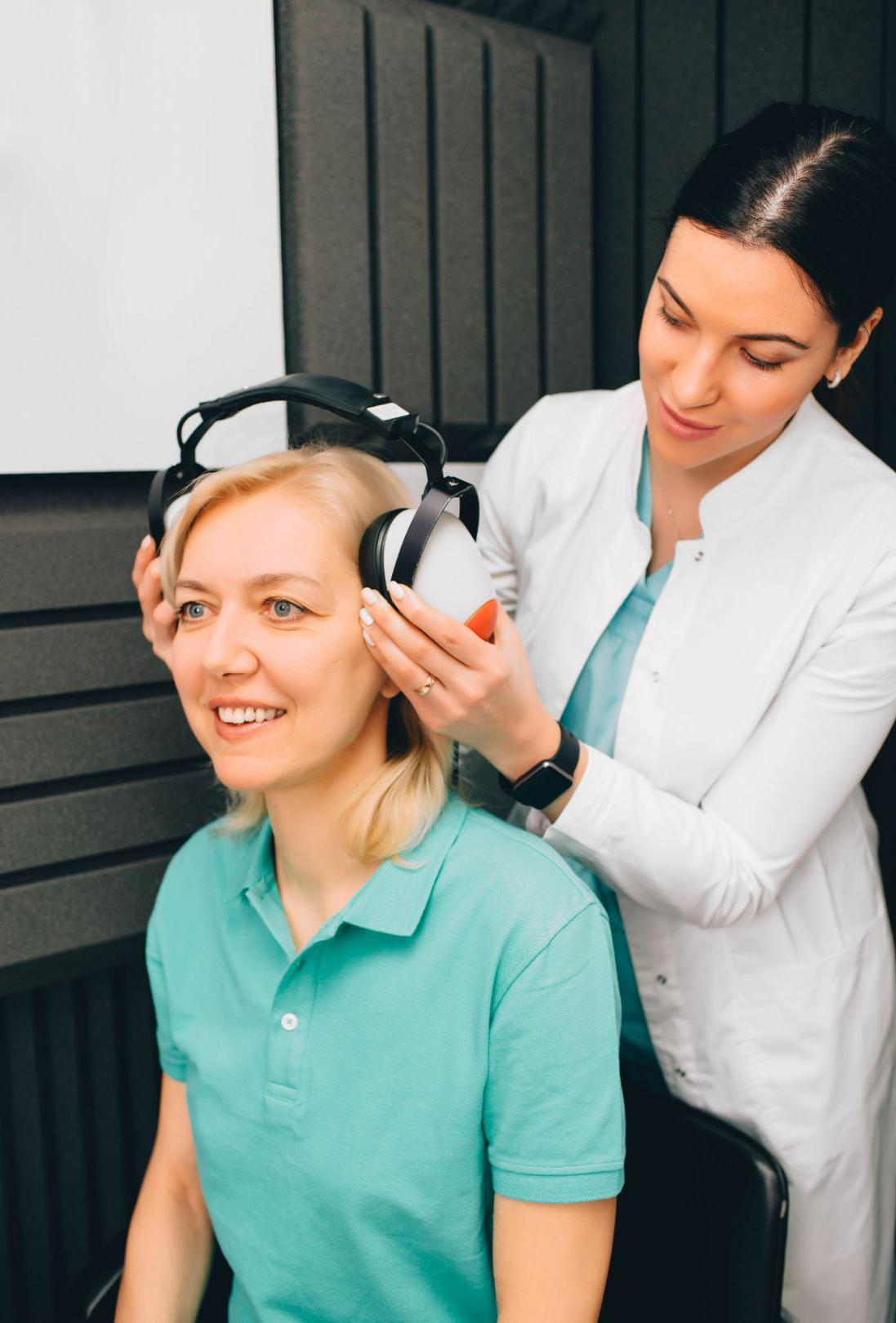If you are having a difficult time understanding what others are saying, are asking others to repeat themselves, or are finding yourself needing to turn up the television, then you may be suffering from hearing loss. The first step to finding out if hearing restoration surgery will help you is to book a consultation to establish a hearing loss diagnosis. From there, our ENT specialists can help determine if a surgical procedure may help you overcome your hearing loss.


What Is Hearing Restoration Surgery?
Hearing restoration surgery is a treatment for hearing loss that’s performed by otolaryngologists, also known as ENT or Ear, Nose, and Throat doctors. The type of hearing restoration surgery you receive largely depends on whether you have conductive, sensorineural, or mixed hearing loss and how severe the impairment is. Each of these hearing loss categories impacts a different part of the ear and comes with its own unique set of symptoms and surgical options.
The Three Types of Hearing Loss That Hearing Restoration Aims to Heal
Conductive Hearing Loss
Conductive hearing loss is the most common type of hearing impairment and is caused by an obstruction or damage to the outer or middle ear that prevents sound from reaching your cochlea, the hearing part of the inner ear. Blockage in your ear canal, fluid between your eardrum and cochlea, a perforated eardrum, or problems with the tiny bones in the middle ear may all cause hearing loss. This type of hearing loss can often be corrected with surgery that repairs the ear canal, eardrum, or bones in the middle ear.
Sensorineural Hearing Loss
Sensorineural hearing loss is caused by damage to the inner ear or auditory nerve and is the second most common type of hearing loss. In the inner ear there are tiny hair cells that convert soundwaves into electrical pulses which are sent to the brain through the auditory nerve. When these hair cells are damaged by loud noise, disease, trauma, infection, or aging you may get hearing loss. If severe enough, this type of hearing loss can often be corrected with a cochlear implant, which bypasses the damaged inner ear and sends sound directly to the auditory nerve.
Mixed Hearing Loss
Mixed hearing loss is a combination of conductive and sensorineural hearing loss and may be corrected with a combination of surgical procedures that target both the inner and outer ear.


Surgeries Available for Conductive and Sensorineural Hearing Loss
There are several different surgeries available to treat conductive and sensorineural hearing loss.
Conductive Hearing Loss
1. Pressure Equalization (PE) Tube Surgery: this surgical treatment is performed in children and adults who experience recurrent ear infections or fluid buildup in the middle ear. A small tube is placed through the eardrum and a small tube is placed through to help equalize the pressure, drain any fluid buildup, and relieve the pain and inflammation within the middle ear. This may help restore hearing loss that has been attributed to abnormal eardrums or Eustachian tubes.
2. Stapedectomy: this surgery treats individuals who have otosclerosis, which is when the smallest bone in the ear, called the stapes, becomes fixed due to abnormal bone growth around it. The role of the stapes is to translate sound waves from the outer ear to the cochlea. When it cannot vibrate, you get conductive hearing loss. To fix this a stapedectomy will either partially or totally remove the stapes bone to allow soundwaves pass through to the inner ear unimpeded which can significantly improve sound conduction and hearing.
3. Canalplasty: if the external auditory canal (EAC) is narrow, either from congenital or acquired means, a canalplasty can be done to widen it. If the narrowed external auditory canal leads to trapped debris, chronic infections, or hearing loss due to occlusion, then a canalplasty is recommended. Other primary reasons for this type of surgery are to remove bony or soft tissue growths or scarring within the external auditory canal.
4. Tympanoplasty: if the eardrum becomes perforated (infection or trauma), this reduces its ability to vibrate the middle ear hearing bones, causing hearing loss. A tympanoplasty repairs the perforation using graft material such as soft tissue (muscle or cartilage). The incision is made either behind the eardrum or the ENT surgeon goes through the ear canal.
5. Ossicular Reconstruction: if the middle ear hearing bones are absent or become destroyed (congenital or from chronic infection), an ossicular reconstruction can be performed through the ear canal to replace the middle ear bones with a prosthesis made of titanium.
6. Bone Anchored Hearing Aid: in those with profound conductive hearing loss, where a traditional hearing aid would be of no use, a bone anchored hearing aid is an alternative treatment. In this system, an implant is surgically inserted into the bone behind the ear, and a hearing aid is placed over top. When sound is detected, the vibrations are sent to the inner ear through the bone.


Sensorineural Hearing Loss
1. Cochlear Implants: the cochlear implant is a surgical treatment option for individuals with profound deafness or are hard-of-hearing. It can help restore hearing and speech understanding, and is made up of two components, an implant and an external component. The implant is surgically placed under the skin behind the ear and connects to electrodes that are inserted into the cochlea. The external component is made up of a microphone, speech processor, and battery, which captures sounds and translates them into electrical signals. These signals get transmitted through the skin to the implant, which sends the signals to the electrodes in the cochlea.
2. Implantable Hearing Aids: for individuals with mild to moderate sensorineural hearing loss, an implantable hearing aid may be a great alternative option. It is placed deep near the eardrum, deep within the ear canal to help the individual enhance their hearing. This type of hearing aid is different from traditional hearing aids, as it must be replaced 6-8 times per year, and doesn’t work on profound hearing loss.
If you are experiencing hearing loss, getting a consultation with an ENT will help determine what type of hearing loss you have and what the right surgical treatment route is for you.
Painful ear infections are a rite of passage for children—by the age of five, nearly every child has experienced at least one episode. Most ear infections either resolve on their own (viral) or are effectively treated by antibiotics (bacterial). But sometimes, ear infections and/or fluid in the middle ear may become a chronic problem leading to other issues such as hearing loss, behavior and speech problems. In these cases, insertion of an ear tube by an otolaryngologist (ear, nose and throat specialist) may be considered.


